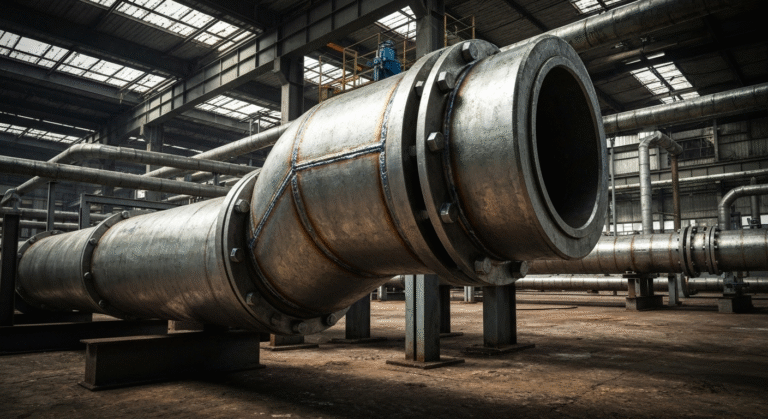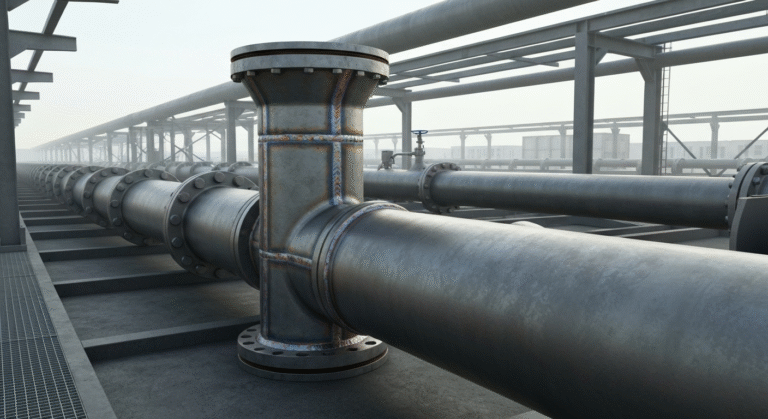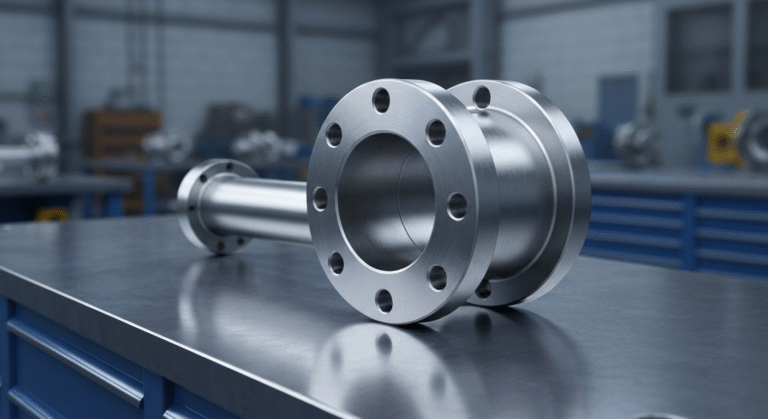-
中国河北省滄州市孟村県銀庄工業区
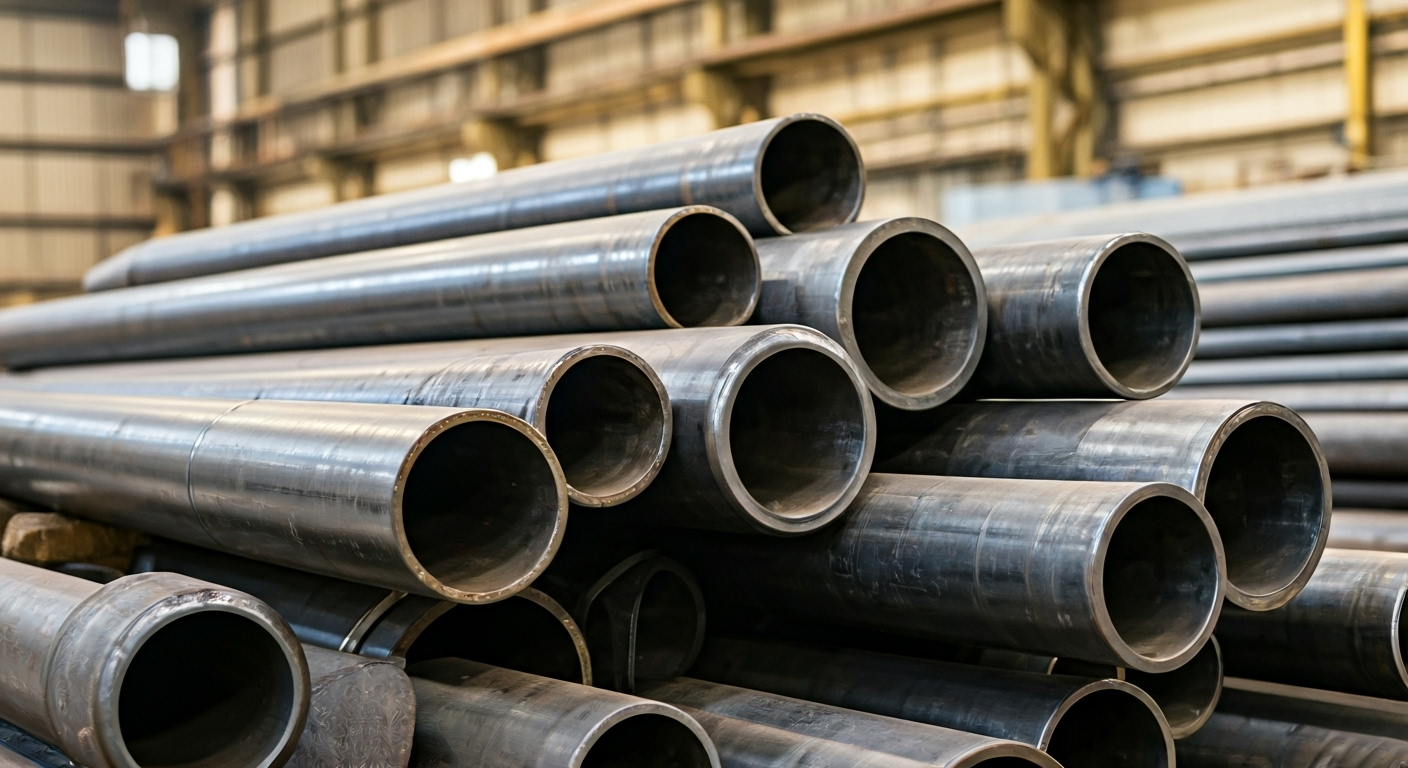
90度鋼管ベンド対エルボ:主な違い
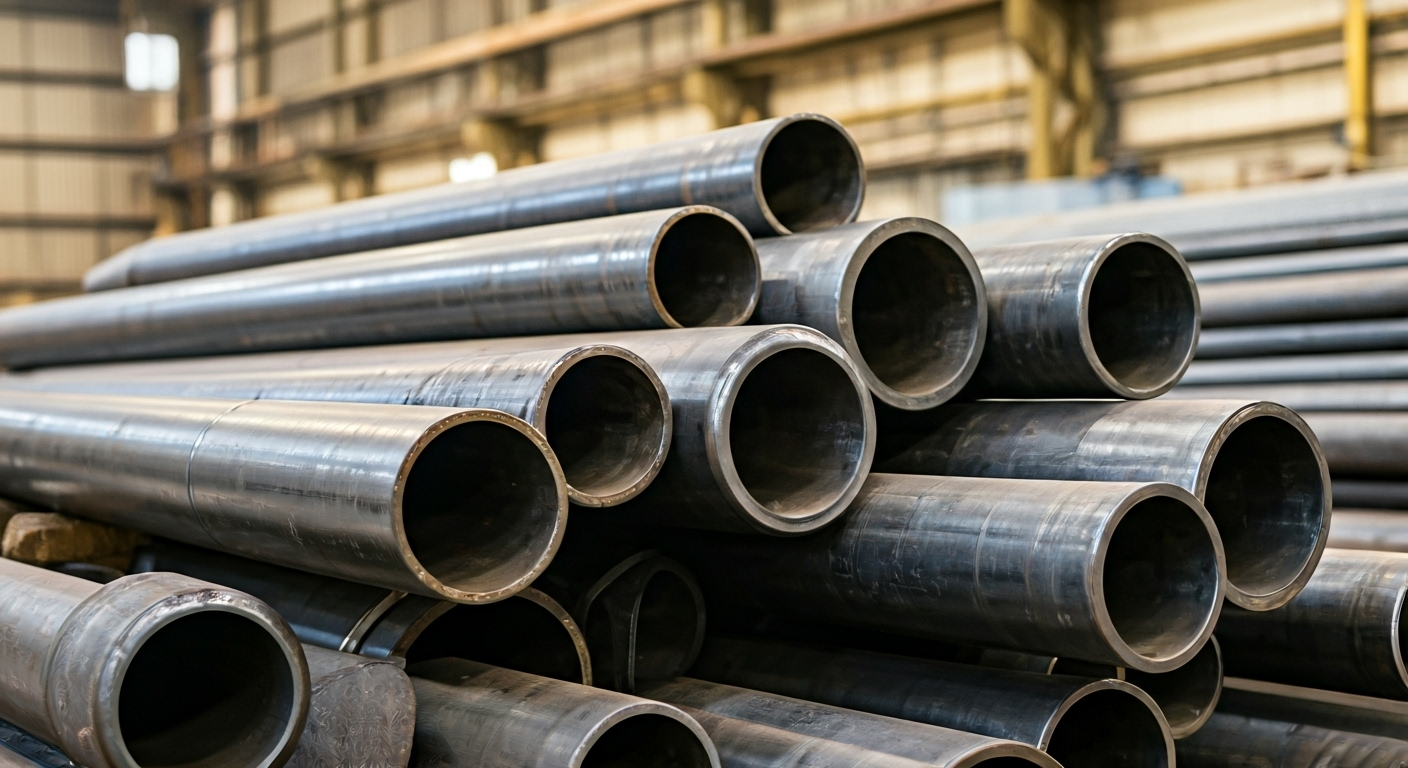
主なハイライト
- A steel pipe bend and long radius elbow serve the same purpose—redirect pipelines—but differ in bending radius and design specificity.
- Bending radius distinguishes them; pipe bends feature larger radii like 3D, 5D, 6D, and 8D, while elbows are generally 1D or 1.5D.
- Pipe bends are tailor-made for long pipelines and gentle curves, while elbows fit tight, short-radius installations.
- Manufacturing methods vary, with bends often requiring cold or induction processes, and elbows crafted through hot forming.
- Steel pipe bends are costlier due to their customisation, whereas elbows are more economical and standardised.
- Applications range from large-diameter bends in oil pipelines to narrow-radius elbows for high-pressure systems.
Transitioning now, let’s explore the basics of steel pipe bends and elbows.
はじめに
Knowing the details of pipeline fittings can help you get better flow and use from your systems. One key point is to look at the differences between 90 degree steel pipe bends and elbows. Both are used to guide fluid. But, their bend radius, how they are made, and their design are not the same. These things can impact how well they work. When you pick one, think about how you will use it, how much room you have, and which specifications you need. This will help you make sure your pipeline fittings work the best they can.
Understanding 90 Degree Steel Pipe Bends and Elbows
A 90 degree steel pipe bend is important in many pipelines. It lets the pipe change direction with less turbulence. This kind of bending must follow exact rules, such as the right wall thickness and bending radius. The pipe bend can be made by cold forming or using induction. On the other hand, a 90 degree elbow usually has a short radius. It helps turn the pipe, too, but it comes with different outer diameters. The choice depends on what the pipeline needs and the nominal diameter you want. Both designs focus on the right radius, wall thickness, and outer diameter for proper work in pipelines.
Definition and Basic Structure of a 90 Degree Pipe Bend
A 90 degree pipe bend is an important fitting used to change the way pipes go in many types of pipelines. It looks like a quarter of a circle. The bending radius and wall thickness of this part both matter a lot. How the pipe is bent will affect things like turbulence and how well everything flows inside pipelines. Most of the time, people make these bends using stainless steel or other strong metals. The thickness of the walls stays the same through the bend so the pipe can stand up to pressure and outside force. When you look at the bend, both the outer diameter and the nominal diameter must work with the rest of the system. It is important for getting smooth transport of fluids at certain angles in the pipeline.
Definition and Basic Structure of a 90 Degree Elbow
A 90 degree elbow is an important fitting in pipelines. It helps to change the direction of flow by 90 degrees. You will often find this part made out of stainless steel. The bend radius of this fitting is made to fit different needs. The main parts of this elbow are the inner diameter and the outer diameter. Knowing these helps to figure out the wall thickness and makes sure it matches with other pieces in the pipelines. This elbow comes as either a short radius or a long radius, based on how much space there is and how the design should be. The thickness, radius, and diameter of this fitting play a big role in its use.
Key Differences Between 90 Degree Pipe Bends and Elbows
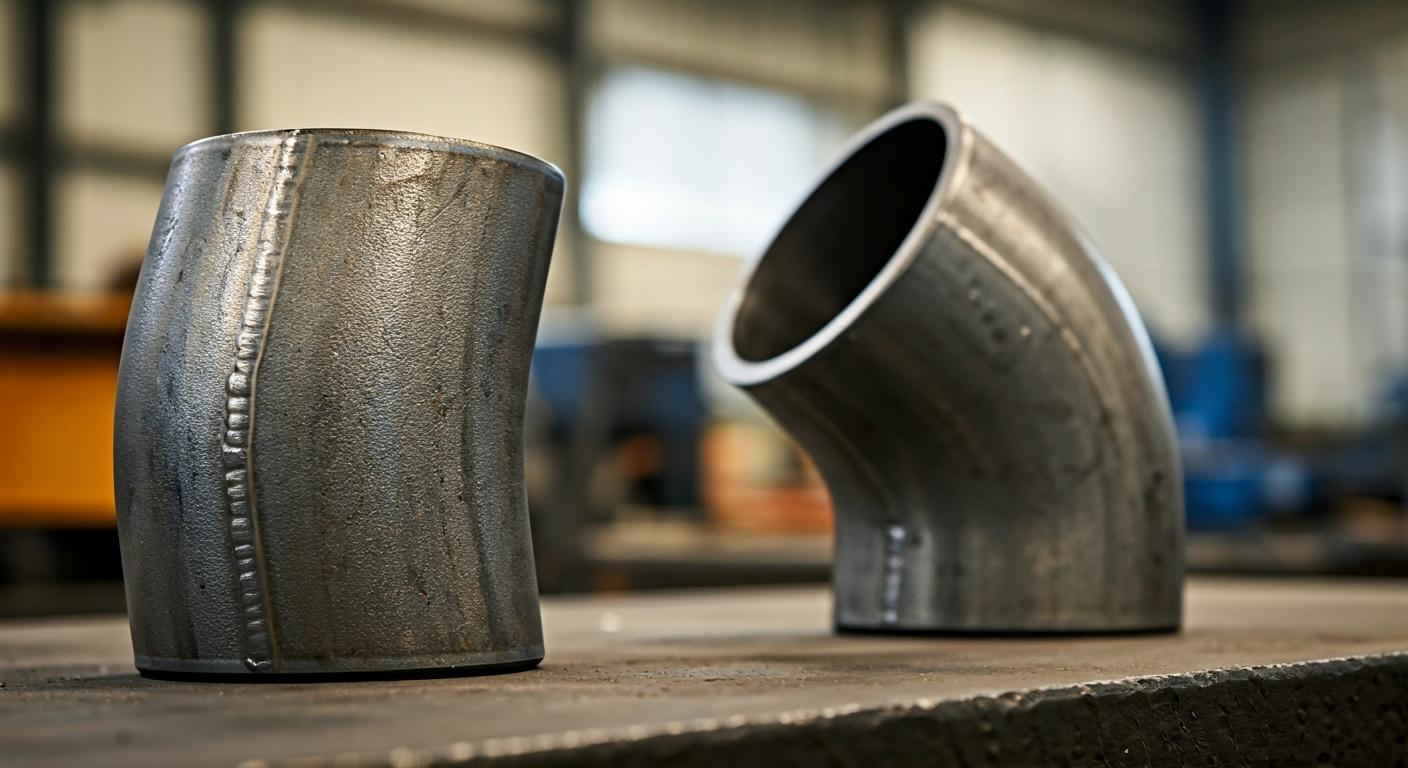
Distinctive features make 90 degree pipe bends different from elbows in design and use. The bending radius is important. Pipe bends, like the steel pipe bend used in long pipelines, have a larger radius. This helps to lower turbulence in the flow. On the other hand, elbows often have a short radius which causes sharper turns.
There are also differences in the way these fittings are made. The process changes the wall thickness and strength. This means they meet specific needs for different jobs, like plumbing or work in factories. So, you can pick a fitting with the right radius, wall thickness, and strength for your pipelines.
Differences in Bending Radius and Design
Bending radius, also known as CLR, is important when you want to tell 90 degree steel pipe bends apart from elbows. Pipe bends usually have a bigger radius. This gives a smoother flow in long pipelines and helps cut down on turbulence. Elbows, on the other hand, come with a smaller radius. This might cause flow restrictions in the pipelines.
A pipe bend is made with a slow, gradual curve. It works well with different pipeline sizes and thicknesses. But elbows are made at an angle and help change the direction of flow fast. They are good for places where there is not much space.
Manufacturing Processes Compared
Different ways to make a 90 degree steel pipe bend or an elbow are important. The way you bend or form the pipe changes how strong it will be and how well it fits your needs. Some usual ways to do this are cold forming and induction bending. These methods can change the bend radius and wall thickness. Even small changes in mold size can change the outer diameters and the way the bend is made. It’s good to know about the differences in how steel pipe bends and elbows are made. This helps people pick the best way for their pipelines and fittings. In the end, the right choice affects how well things work and last.
3D, 5D Pipe Bend – Common Use Bends in Pipelines
In pipeline construction, there are 3D and 5D bends, and each one is used for a different purpose but both are very important for changing the pipeline direction. A 3D bend is shaped so that the bend radius is three times the nominal diameter of the pipe. This type of bend lets the pipe take tight turns while still keeping the flow moving well.
The 5D bend has a radius that is five times the nominal diameter. This bend helps lower turbulence and stress on welds, especially over longer parts of the pipe.
People use both types based on the specific needs they have for their pipeline. These bends let the fluid move well, even with changes in wall thickness or outside diameter. The right bend is chosen to get the best results depending on the layout, required diameter, thickness, and to control turbulence.
3Dベンド
A 3D bend has a bend radius that is three times bigger than the pipe’s diameter. The larger radius helps keep the flow smooth and steady in pipelines, minimizing the need for additional coatings. This shape cuts down on turbulence and lets fluids travel more easily. People pick this type of bend when there is a big change in direction in the pipe. You often find 3D bends in longer pipelines. They fit many uses, like plumbing or factories. The 3D configuration works with many wall thicknesses and diameters, so it can be used in different jobs. Because it is flexible and works well, it is an important part of today’s piping systems.
5Dベンド
A 5D bend is a type of pipe bend where the bend has a radius that is five times the pipe’s outside diameter, or specifically, five times of the pipe diameter. This long radius setup helps balance how much the pipe curves with how well things flow through it. Using a 5D bend in long pipelines can cut down on turbulence, which helps fluids move more smoothly through the pipe. These bends work well in places where there is not a lot of space. They can be used with pipes that have different wall thicknesses and diameters. Because they have this long radius design, 5D bends are often chosen for pipelines that need good movement of fluids. You will see them used in a lot of industry areas where the flow inside the pipeline matters.
6Dベンド
A 6D bend means that the bend radius is six times the pipe’s nominal diameter. This type of bend is used in pipelines when you want less turbulence and better flow of fluids. The larger radius helps lower strain on the whole pipeline system. People often use these bends in long pipelines, where it is important for pipes to have smooth turns. 6D bends are less likely to cause stress or damage that might lead to breaks over time. Picking the right bend radius is key to make sure pipelines work well.
8Dベンド
The 8D bend gets its name because the bending radius is eight times as wide as the outer diameter of the pipe. This type is good for large diameter pipes. The 8D bend helps to lower turbulence in the fluid as it moves through the pipelines, and it also helps fluid flow more smoothly. You will often find these in long pipelines where keeping good wall thickness and making sure the shape stays strong is very important. The long radius design means there is less stress at the joints. This also makes it easier to use the right mechanical force during bending. It is a good choice for pipelines designed to meet specific needs in many types of industries.
Large Diameter Pipe Bend / Bending
Large diameter pipe bends are very important when you build long pipeline systems. These pipe bends are made for bigger diameters and have a certain bend radius to help the pipes join easily. This design helps to stop too much turbulence in the flow. When you bend a pipe like this, you use mechanical force to keep the wall thickness and strength of the pipe just right. In places where how fluid moves is important, picking the right bend radius, either long or short, can make the flow better. It can also lower the chance that the pressure will drop in long pipelines. The right diameter, wall thickness, and way of bending all help the pipelines work well.
How does steel pipe bend made?
Steel pipe bends are usually made with a process called hot push bending. In this way, the steel gets heated first and then shaped into a bend by applying pressure. This method helps to keep the pipe bends a certain size and shape. This is important to make sure that the pipelines stay strong and safe.
Pipe Bending Machine by Hot Push Manufacturing
Using a pipe bending machine with hot push bending and different dimension of mould is a good way to make 90 degree steel pipe bends. These pipe bends are needed in many applications. The machine uses mechanical force on the heated part of the pipe, which lets it form the wanted radius. This also helps keep the wall thickness from changing too much. The way of bending keeps the fittings consistent, no matter the diameter of the pipe. This means the quality of each part stays high. The method works well for making long radius pipe bends. Long radius bends are very important in long pipelines. They help improve the way things flow inside and cut down turbulence. This keeps pipelines working well for a long time.
Differences between Steel Pipe Bend VS Elbow
There are some big differences between steel pipe bends and elbows when it comes to design and how they work. A 90 degree steel pipe bend usually has a bigger bending radius. This helps make the flow in pipelines smoother. Elbows have a much shorter radius, so there is more turbulence in the pipe. Pipe bends can work with many sizes and shapes. Elbows are often limited with their size, so they are not as flexible for certain uses. If you know about these differences in radius, you can pick the one that fits your project’s needs. This can make your pipelines work better, cut down on turbulence, and help you choose the right bending tools for the job.
Bending Radius of Bend 3D, 5D, 8D and Elbow 1D, 1.5D
Bending radius is very important for pipe bends and elbows. In a 3D bend, the radius is three times the nominal diameter in inches. This helps make smoother turns in long pipelines. A 5D bend has a radius that is five times the diameter in inches. This type further cuts down on turbulence and helps the flow move better.
Elbows, however, be made tighter. A 1D elbow has a bending radius equal to the outer diameter. A 1.5D elbow is a bit less tight, so it can be used when fittings need to be more compact. All these things help you pick the right pipe bends and fittings for different pipelines.
Different of manufacturing processes
The way that 90 degree steel pipe bends and elbows are made can be very different. This affects what the the parts will be like. When it comes to pipe bends, there are methods like induction bending and cold forming. These ways help get the right changes for a pipeline’s direction but still keep the wall thickness and outer diameters the same. On the other side, elbows are made in a different way. Elbows usually get shaped by hydraulic pressing. This is done to get a bend with an exact bend radius.
These different ways of bending and forming are not just about how much things cost to make. They also make a difference in how tough and reliable the fittings are when used in long pipelines. In the end, these making methods allow you to choose what works best for your specific needs, making sure the fittings, their thickness, and shape match well with the pipelines you’re working with.
Cost different with elbow and 3D, 5D, 6D, 8D bend
Pricing differences between 90-degree elbows and bends, like 3D, 5D, 6D, and 8D, depend on a few main things. These things are the material you pick, how hard it is to make, and the size details. Most of the time, elbows have a shorter bend radius. Because of this, they are often cheaper. The simpler shape of an elbow can make the cost lower.
But bends often need other ways to be made. These include bending by using heat, called induction bending, or doing it at lower temperatures, called cold forming. These ways can be more work and raise the cost.
Knowing how elbows and bends are different helps you choose what works for the job. It also helps you find what fits the budget. So, when you look at bend radius and different bending ways, you’re better able to pick what your line needs.
Different applications scope
A 90 degree steel pipe bend is useful in many kinds of work. People use it for long pipelines in many industries. This type of bend helps control how fluids move, and it does a good job at keeping turbulence low. This helps the pipelines work well. You can see these bends a lot in oil and gas, water supply, and places where chemicals are processed. The steel pipe bend is very important and makes these jobs easier and better.
You can pick different sizes and wall thickness depending on your specific needs. Choosing the right size helps the pipe hold up under tough forces. It also keeps the pipeline strong in hard places.
We supply steel pipe bend with below ranges:
There is a wide range of steel pipe bends you can choose from. We have these pipe bends in many different sizes. You will find both small pipe bends and ones with a larger diameter, so they work well with many pipeline setups. Every pipe bend keeps the right wall thickness and outside diameter. This means they can be used for many different needs. We also use different ways to make these bends. One way is through cold forming. These methods help us make high-quality pipe bends for homes and factories. You get the right diameter and thickness with each one.
Contact Us Now for an Immediate Offer!
Seamless solutions for all your pipe bending needs are waiting for you. Our team is ready to give you quick offers that fit what you need, so you get products made with care and high quality. If you need 90 degree steel pipe bends, elbows, or other fittings, we have a large selection that will meet your project’s needs. Don’t wait to contact us. We give fast and clear quotes that match your timeline and budget. Let’s start working on your piping and bending solutions today!
Steel Pipe Elbow
A steel pipe elbow makes it easy to change the direction of a pipeline. This pipe elbow has a seamless design for better fit and strength. You can find these fittings in short radius or long radius types, so they fit many different bending needs. Their outer diameters and wall thicknesses also come in many sizes. This means they can work with lots of pipe sizes and different places. It is important to know the ASTM and ASME standards when you pick a pipe elbow. This will help you get the right fittings, keep the flow good, and make the whole system work well.
Steel Pipe Tee
A steel pipe tee is an important fitting used in pipelines. It lets the fluid flow change direction at a 90-degree angle. This tee is made from stainless steel. It stands up well to different weather and tough conditions. The tee comes in designs that support equal and unequal branching. That means it can meet specific needs in many different situations. This type of fitting is great for joining pipes of many sizes together in long pipelines. It helps keep the flow of fluid smooth and does not let much turbulence build up at the join points. These fittings work well and fit right into long pipelines.
Steel Pipe Cap
A steel pipe cap is used to close off the end of a pipe. It helps to keep fluids and gases from leaking out. These caps are made to handle high pressure and do not rust easily. You can find them in different wall thickness and sizes, so they can fit many types of pipes. The strong build of the caps helps them last a long time, even in tough places. Using a steel pipe cap helps a pipeline work well and stay safe. It also cuts down on turbulence inside the pipe when fluids move, which makes the whole system work better.
Request for an Immediate Offer?
If you need a fast and fair quote on our steel pipe bends, elbows, tees, or caps, get in touch with our team. We work hard to give you answers that fit what your project needs. We want to help you save time and money. Contact us now for an immediate offer!
結論
In short, knowing the key differences between a 90 degree steel pipe bend and an elbow is important when you choose what you need for your project. The steel pipe bend is made to fit certain bending curves. It also has different levels of flexibility. Elbows are used when you want to change direction in a sharp way. The part you pick will change how well your pipeline works. It affects things like how the fluid flows and how strong the whole setup will be. Make smart choices based on what your pipeline needs. This will help the system work better and save you money.
よくある質問
What are the main applications for 90 degree pipe bends versus elbows?
90 degree pipe bends are often used when you need a smooth turn and you also want to lower pressure loss in the system. On the other hand, elbows are a better choice when there is not much space and you need a quick, sharp turn. People use elbows a lot in things like plumbing and HVAC systems. Both pipe bends and elbows be needed based on what the project needs.
How do pressure ratings differ between pipe bends and elbows?
Pressure ratings can be different for pipe bends and elbows. The main reason is they have a different shape and strength. Usually, pipe bends have a higher pressure rating. This is because they let water or gas move more smoothly. Elbows might get more stress around the joint. This can lower how much pressure they handle.
Which is more cost-effective: a 90 degree bend or elbow?
When you look at cost-effectiveness, 90-degree bends are usually made at a lower price than elbows. But, the total cost can be different. It depends on the material, the size, and what you need to use it for. You need to think about all these things before you choose.
Are installation techniques different for bends and elbows?
Yes, there are different ways to install bends and elbows because they do not have the same shape. Bends are used when you need to change the direction of a pipe slowly. Elbows, on the other hand, make a sharp turn. These differences affect how you line up the pipe, what kind of support you use, and how you handle the parts when you put them in.
Can 90 degree pipe bends replace elbows in existing systems?
Yes, you can use 90 degree pipe bends instead of elbows in the system if the bending radius and the design fit what the system needs. But, you need to check the bending radius and see if both the pressure loss and the way the flow moves will work for your setup. It is important to make sure the pipe bends match what the application asks for and the system will still work well.
